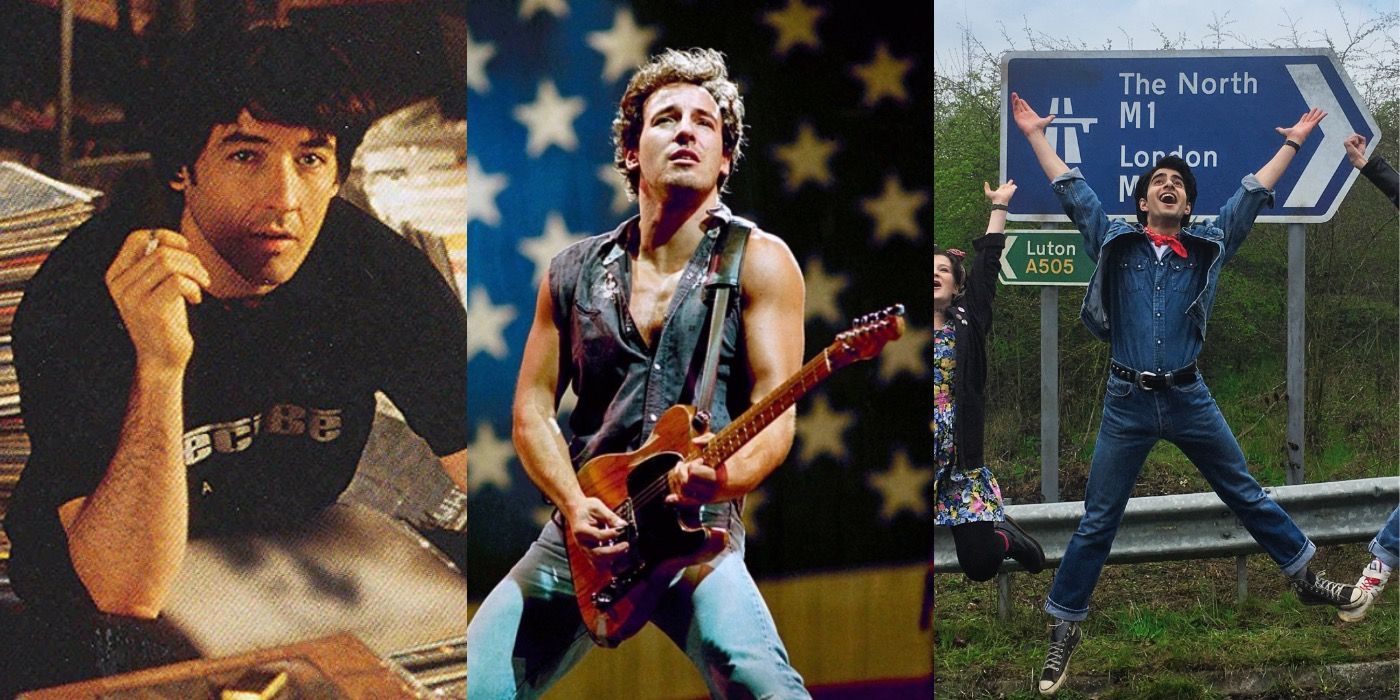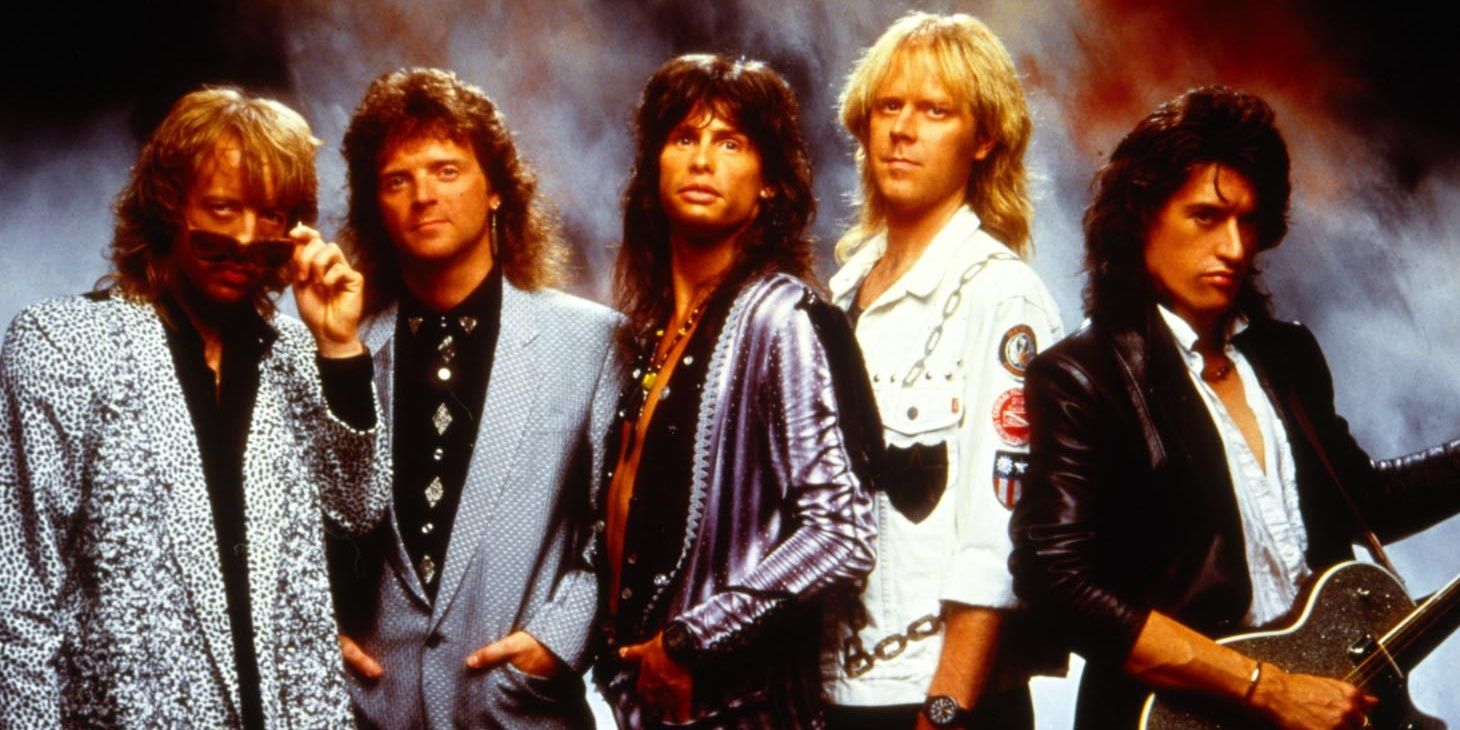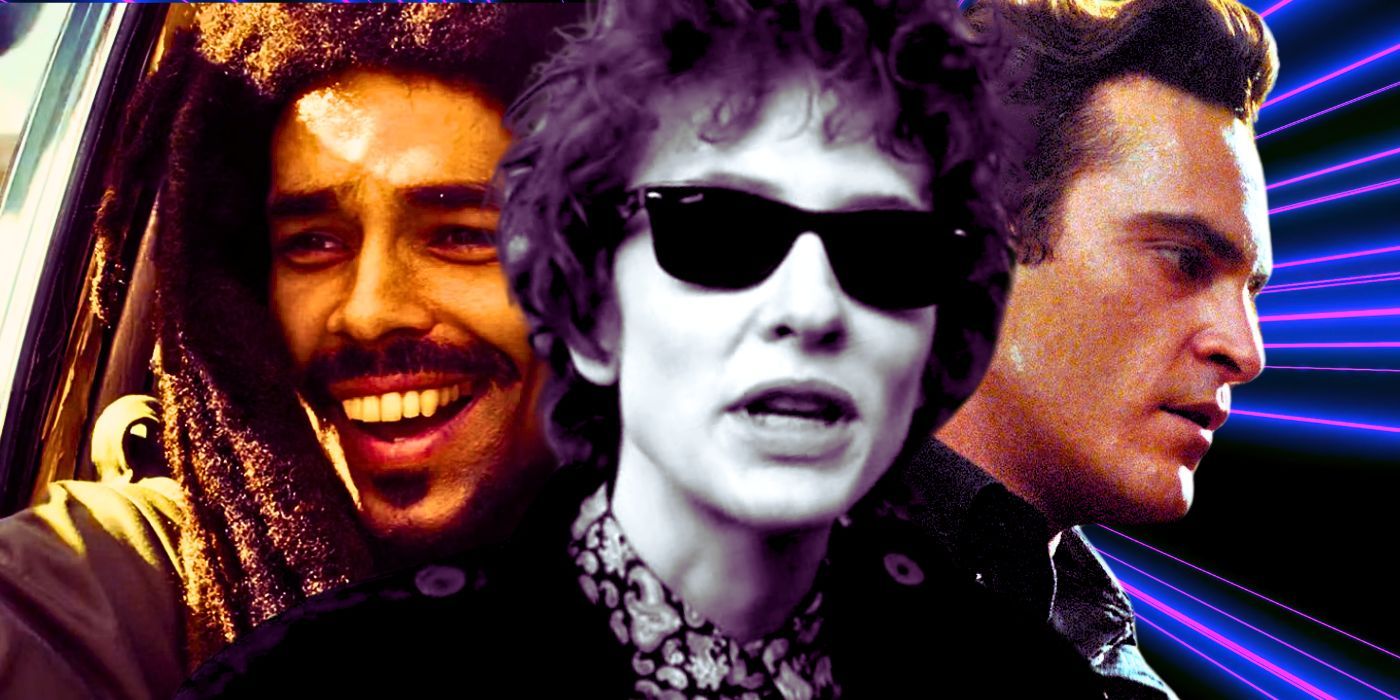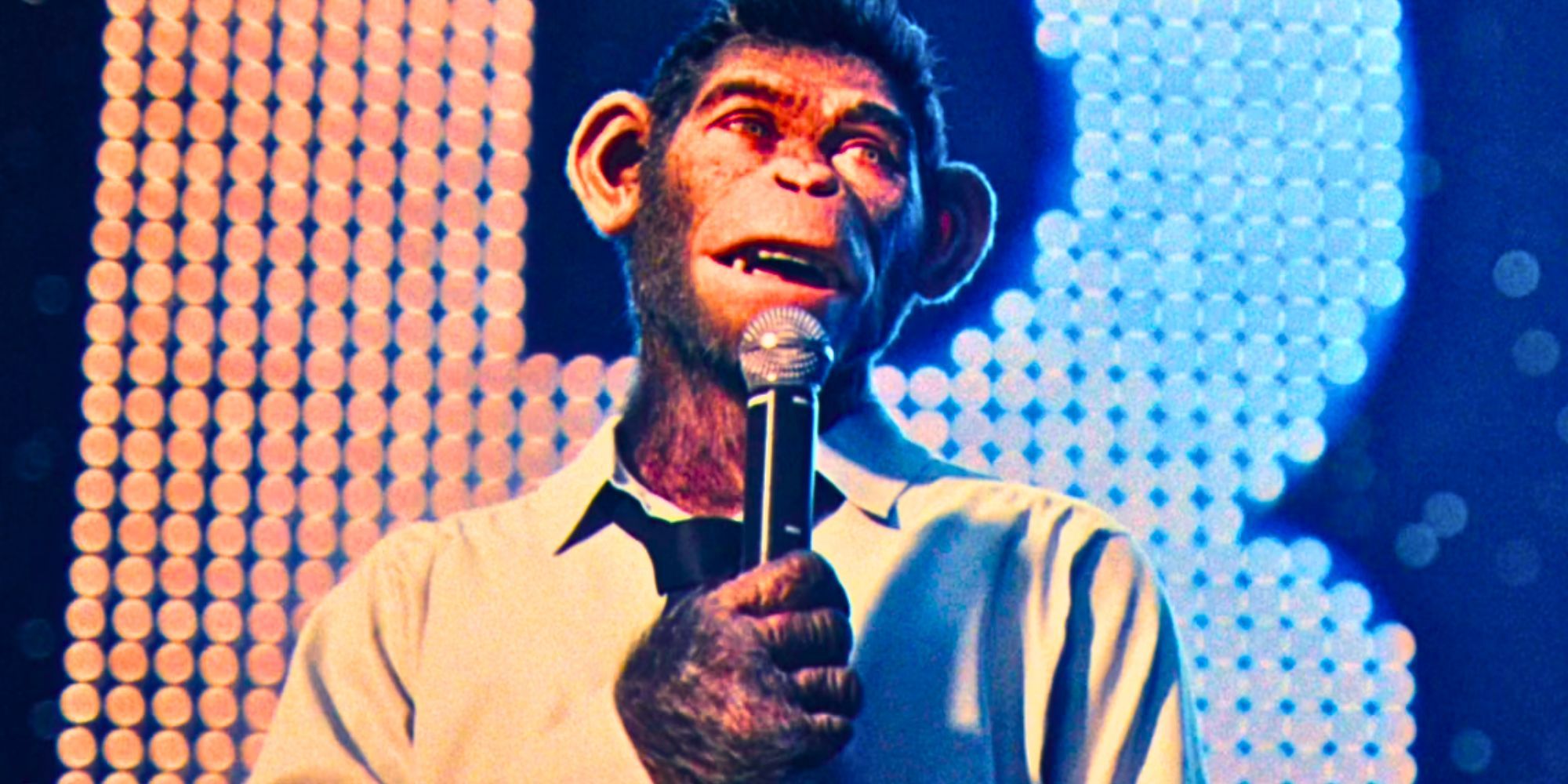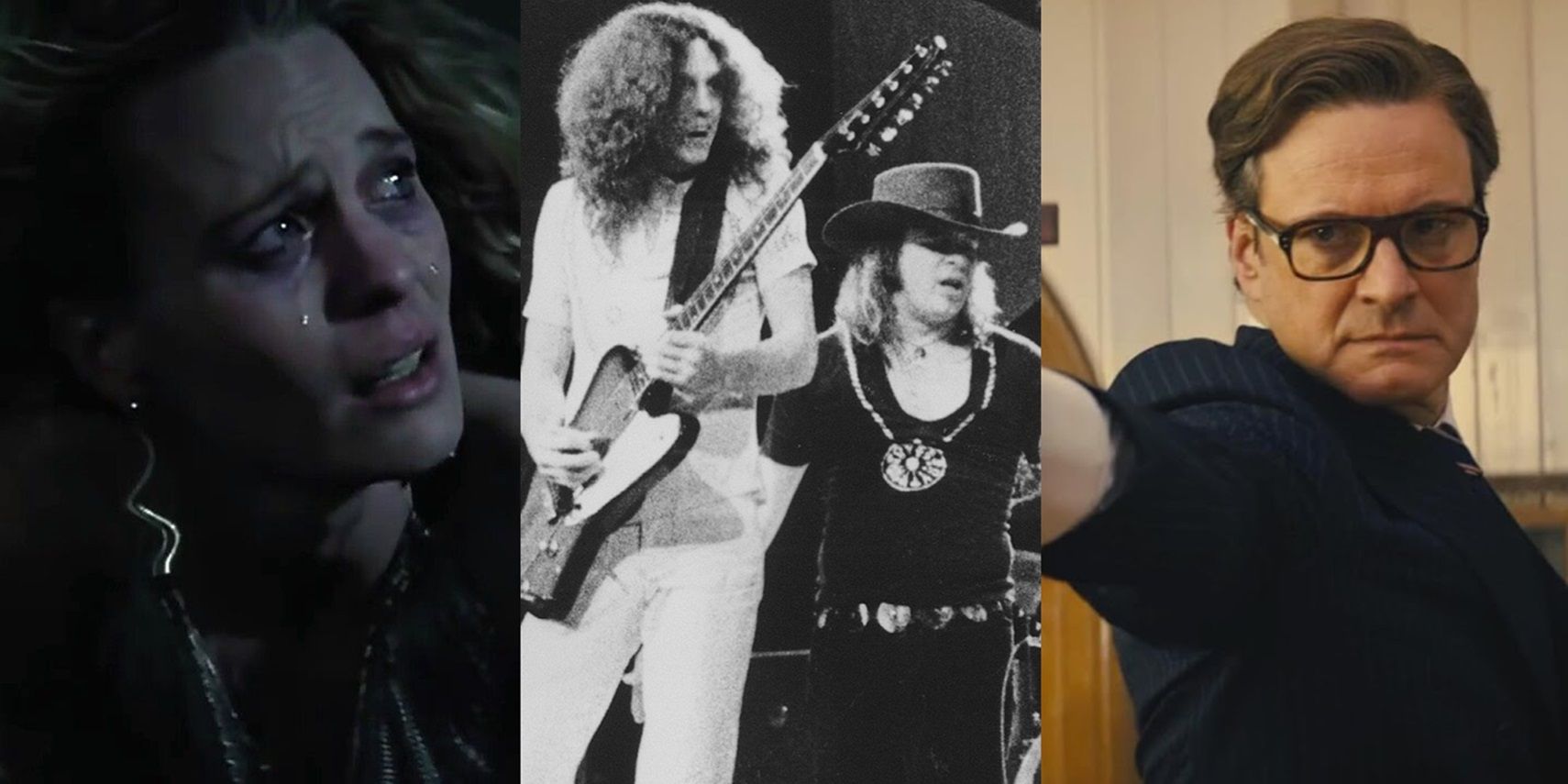What is it about the closing songs of our favorite albums, particularly when it comes to the icons logged forever into the rafters of the Hall of Fame echelon of iconic rock music, that makes them so memorable? There are the opening tracks too, of course; your invitation to “Thunder Road,” the depth of riffs that bury you on your excursion of “Welcome to the Jungle,” and even the phone buzzing that lets you know that it’s “London Calling.” Let’s not even start with the depth and the amount of “Purple Haze” coming through the doorway.
But what about once we reach the end of the album? When we’ve been metaphorically brought to the car, taken on the ride, and it’s now the final words of last call before the road turns back home again in the steamy heat of the night? How will the conclusion be written? What will the last passage of stone say before the chisel gets put down for good?
The last signpost of the destination is coming, and time is falling away. How will the hourglass be memorialized? It’s time to drop the mic and go from anon to icon. The following tracks accomplish that feeling and so much more as they close out their own respective albums.
10
Jungleland (1975)
A World-Weary Wonder
It’s hard to figure out what songs stick out the most when talking about a record as significant and as timeless as Bruce Springsteen’s 1975 eight-track opus Born to Run. You have the title track, “Backstreets,” the aforementioned “Thunder Road,” and “Tenth Avenue Freeze-Out” all in contention, of course. But it might just be the “Jungleland” finale of Born to Run that sneaks in the ultimate storytelling hammer blow of the piece.
Related
10 Best Uses Of Bruce Springsteen’s Music in Movies
Bruce Springsteen’s evocative songs have made perfect additions to film soundtracks. These are the 10 best uses of Springsteen’s music in movies.
Backed by the timeless 1-2 punch of Springsteen’s intricately surreal storytelling and the big-rock bounce of the pocket of his blood brothers in the E Street Band, “Jungleland” is a 10-minute journey as epic as the trials and tribulations of the city Springsteen sings about in the song. To then be punctuated by a saxophone solo by Clarence Clemons that is one of the most emotive, massive, gorgeous pieces of saxophone music ever made… “Jungleland” is a closer for the ages; just strap in and enjoy.
9
Purple Rain (1984)
A Guitar Hero’s Serenade
Prince was so groundbreakingly fresh with 1984’s release of Purple Rain. It was both a movie and an accompanying soundtrack released that year. Say what you will about the acting in the film, but the Purple One and his band, The Revolution, didn’t have a note out of place when it came to the strength of the music. Purple Rain was (and remains) an electric, sensuous, buzzing, push-the-envelope creation that immediately (and rightly) blew up, especially when it came to that final, self-titled track.
The Purple One and his band, The Revolution, didn’t have a note out of place when it came to the strength of the music.
The song “Purple Rain” is a near-on holy, musical church-type of experience. From the moment the first chords are struck and the percussion kicks in along with Prince’s trademark vocal lilt (and a hint of strings), you’re aware something special is happening here. “Purple Rain” was always said to be about purification and being with the one you love at the end of the world, and it really does feel like renewal. When Prince kicks his voice up to meet his legendary guitar riffing at the climax… nothing but goosebumps remain.
8
The Rolling Stones, You Can’t Always Get What You Want (1969)
Some Rambled-On Realism
The Rolling Stones used “You Can’t Always Get What You Want” as the capper to their 1969 album Let It Bleed, and it showed the group at a very mature and layered level of creation. While Let It Bleed didn’t carry quite as many of the group’s heavy-hitter songs from their deep catalog, opening with “Gimme Shelter” and closing with “You Can’t Always Get What You Want” still shines as a fine yin and yang to this album’s cycle.
Related
16 Classic Rock Songs That Completely Define The Genre
There aren’t many genres of music that gained popularity after the 1960s and 70s that weren’t directly influenced by the rock music of that time.
Opening with the angelic vocal reach of the London Bach Choir before rhythmically tumbling into a bobbing gait buoyed by lead man Mick Jagger’s signature drawling vocals, “You Can’t Always Get What You Want” feels like a more introspective angle for the band. They feel more contemplative but philosophically content to say that sometimes things may not work out, and we may not end up getting our own way. It’s okay, however, to recognize and take home that realization, knowing that it may all still work out in its own fashion.
7
Bob Dylan, Desolation Row (1965)
A Fable Of Pure Storytelling
Leave it to famed singer-songwriter Bob Dylan to create one of the most purely surreal, process-of-thought, folk-based closing song epics in the history of both closing songs and folk music itself. Attached to the end of the already stacked lineup of his more instrument-heavy 1965 album Highway 61 Revisited, “Desolation Row” is about as essentially Dylan as it gets. Who else could you imagine telling the nature of such a story?
Backed primarily by an acoustic guitar, some harmonica trills, and a few backing six-string fills, Dylan plays through the 11-minute environment of his own making with all the adept agility of any good film director worth his salt. Only the singer knows which way these chess pieces are moving and why, and he’s not about to tell us as listeners more than we need to know. That’s so Dylan, too, the mystery buried within all the layers of his works. Get your magnifying glass out then, because these are thick blankets.
6
Bob Marley, Redemption Song (1980)
The Bittersweet Bonds Of Farewell
Reggae icon Bob Marley closed out the final album recorded during his lifetime (1980’s Uprising) in stellar fashion with the iconic track known as “Redemption Song.” It was a departure for Marley, as “Redemption Song” was an entirely solo acoustic piece, very much in the folk-minded framework stylings of Bob Dylan rather than the signature reggae sound Marley was best known for.
Related
10 Great Music Biopics To Watch After Bob Marley: One Love
Kingsley Ben-Adir captured the reggae legend in Bob Marley: One Love, and there are plenty of other great biopics for viewers to check out next.
This may have been due to Marley already being in severe pain from a cancer that started in his toe that would take his life in 1981. Facing down his own mortality, Marley seemed to wax his most personally poetic on the philosophy of life and religion with “Redemption Song.” It is a fragile and delicately beautiful piece of material, and one that would rightly elevate Marley even further to a man whose creative work we still hold in the highest regard.
5
The Replacements, Here Comes A Regular (1985)
An Introspective Acoustic Swooner
“Here Comes a Regular” was the finishing track from Tim, the 1985 fourth studio album by punk-leaning alt-rockers The Replacements. This was the group’s first major label release and would prove to be their last with their original lineup when guitarist Bob Stinson was kicked out of the band the following year. Tim and “Here Comes a Regular” would show The Replacements’ continued evolution away from simply thrashing with their amps at the highest volume, something they’d also shown on their prior LP, Let It Be.
Indeed, “Here Comes a Regular” shows off a softer, singer-songwriter side of Replacements’ frontman Paul Westerberg that’s reminiscent of the worldly fatigue in the words of a Springsteen or Dylan. His narrator on this closer embodies the soul of every blue-collar barfly that feels stuck inside the confines of a mundane and weary square of existence. There’s a deep well in all that hopelessness and a beauty in all the implied banality.
4
The Beatles, A Day In The Life (1967)
A Prolific, Beautiful Dreaming Patchwork
“A Day In The Life” is a fitting conclusion to the heavily conceptual nuances of The Beatles’ 1967 record Sgt. Pepper’s Lonely Hearts Club Band. The song dances between the musing depths of John Lennon and the pop-perking pep of Paul McCartney, creating a dreamlike shifting weave between the two that orbits into the cosmos of a 40-piece orchestra and a psychedelic sequence that feels so uniquely a part of all the constellations.
The song dances between the musing depths of John Lennon and the pop-perking pep of Paul McCartney.
“A Day In The Life” is a perfect stamp on the moment of where The Beatles were heading. It is a closer that not only puts just the right wraps on Sgt. Pepper but also shows that the Fab Four’s boy band roots were a long way back in the rearview. Their talent was growing in ways the world would just marvel at seeing in their full flesh.
3
Oasis, Champagne Supernova (1995)
The Ballad Beneath The Landslide
One of the most defining statements of the ’90s Britpop movement was easily Oasis with their 1995 second studio album, (What’s The Story) Morning Glory?, which took the band from their small-time roots to mainstream worldwide rock appeal. While the record had plenty of defining moments, one of the biggest was arguably the composition’s closer, “Champagne Supernova.”
Related
What Happened To Liam Gallagher & Oasis After Better Man
Better Man depicted Robbie Williams’ friendships and rivalry with Liam Gallagher and the band, Oasis, who experienced success after the movie.
Clocking in at over seven minutes in length, the epic track showed the group’s knack for drifting between the teeth of their rock-and-roll nuts and bolts, as well as a further-fielding, psychedelic-leaning tendency that seemed influenced by the likes of The Beatles. For all of their noted fighting and bickering, brothers Noel and Liam Gallagher complement each other well here, with Liam’s nasally vocals accented perfectly by Noel’s guitar-laden instrumentation. If any song could feel like a supernova, this one is it.
2
Nirvana, All Apologies (1993)
Acoustic-Led Alienation
Written as the closing track on Nirvana’s 1993 third and final studio album, In Utero, the somewhat misshapen acoustic-electric, cello/percussion-backed mumbling of “All Apologies” felt like the appropriate final mission statement for the band and lead man Kurt Cobain. It wasn’t perfect, a little quiet but a little rough around the edges, and still seemed to carry the torch for Nirvana’s rebellion against the world the way they saw it.
Cobain’s lyrics only sealed the matter, as they seemed to convey the sense of alienation and absurdity that he felt about life and existence as we know it. As with so many of Cobain’s writings, there seem to be implications of darkness smoldering just beneath the surface, but not close enough to visualize clearly. “All Apologies” seemed to hint at new levels to come with where Nirvana was going, but with Cobain’s death only months after the release of In Utero, that was sadly not to be.
1
Lynyrd Skynyrd, Free Bird (1973)
A Countrified Rave Rocker
One of the most storied closer of closer songs easily has to be Lynyrd Skynyrd’s “Free Bird” off of their 1973 debut LP, (Pronounced ‘Lĕh-‘nérd ‘Skin-‘nérd). The song that would eventually grow to be the stereotype for the most yelled-out concert request is actually quite a burner of a track, going from a gentle country grooving strummer to a frantic, frenetic gallop of guitar-fretting whiplash.
Related
The 10 Best Uses Of Lynyrd Skynyrd Songs In Movies
Lynyrd Skynyrd’s unique Southern rock sound has been used in tons of movies, from classics like Forrest Gump to recent hits like Kingsman.
If a song could ever go from feeling like a John Wayne saloon-lapping stroll to a perfectly synced major motion picture smooth-as-silk opening bank robbery sequence, “Free Bird” is that track. Lynyrd Skynyrd certainly had other iconic and notable songs to their name from throughout their tenure as a group, but it’s hard not to keep looking back at what “Free Bird” accomplishes. Not only does it embrace what a closer song should be in the final chapter, it slams (Pronounced ‘Lĕh-‘nérd ‘Skin-‘nérd) with all the essence of a Steve McQueen car chase.


